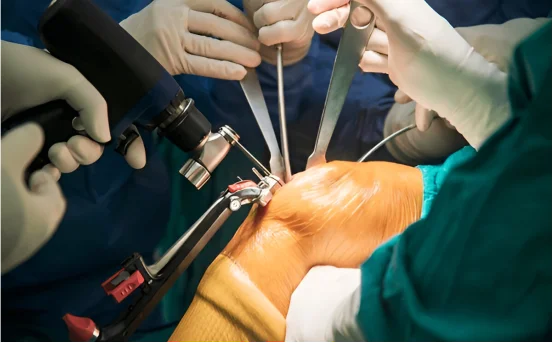Percutaneous coronary intervention or coronary angioplasty with stenting as it is often referred to, is a form of interventional cardiology that is less invasive than traditional open heart surgeries recommended for narrowed or blocked coronary arteries. This angioplasty procedure works on the principle of widening arteries which helps ease the blockage in them to restore blood flow. Blockages in the coronary arteries can lead to the more severe conditions of heart angina, shortness of breath, or heart attack.
Percutaneous coronary intervention procedures require the insertion of a catheter in either the groin or wrist. This cardiac intervention is more effective and lower risk than open heart surgeries and is often recommended for CAD sufferers. During the procedure, a tiny balloon and stent device is used to open and maintain the narrowed artery ensuring oxygenated blood continues to flow to the heart muscle. With faster recovery times when compared to traditional surgeries, Percutaneous coronary intervention is becoming the preferred method of treatment.
It is imperative that patients and healthcare providers alike recognize the importance of understanding this type of surgical intervention as the prevalence of cardiovascular conditions continues to rise across the globe.
Why is Percutaneous Coronary Intervention Surgery Performed?
- Regain Arterial Blood Circulation
The primary reason percutaneous coronary intervention is carried out is for restoration of blood flow through narrowed clogged arteries. Surgical and non surgical procedures for dealing with plaque buildup (atherosclerosis) are available. The remaining narrowed arteries can be opened and maintained through deployment of stents ensuring smooth blood circulation to the heart and other areas of the body.
- To Alleviate Symptoms
Patients dealing with persistent chest pain, fatigue, and shortness of breath often experience considerable relief after percutaneous coronary intervention. It enhances exercise tolerance as well as overall daily functioning.
- In Response to Emergencies
Percutaneous coronary intervention is commonly performed as an emergency procedure in case of acute myocardial infarction (heart attack). The rapid application of balloon angioplasty decreases damage to the heart muscle, particularly in terms of anatomical injury, and decreases the risk of future complications.
- Instead of Bypass Surgery
In patients who cannot undergo CABG due to age or other medical conditions, PCI offers a safer, less invasive, and well-tolerated, alternative procedure with good long-term results.
- Symptoms Suggesting the Need for Percutaneous Coronary Intervention Surgery
- Coronary artery disease does not always require PCI, but the following symptoms should prompt further assessment:
- Chest pain (angina): Notably while exercising or in stressful situations
- Shortness of breath: Indicative of insufficient oxygenated blood flow to the heart muscle or overall blood volume
- Fatigue or weakness: Usually associated with low output from the heart
- Pain in the arms, neck, jaw, and back: Associated radiating discomfort concerning the heart
- Fast beating or an irregular rhythm of the heart
- Lightheadedness or sudden loss of vision
If these symptoms can’t be resolved, your cardiologist will likely perform some tests and based on the results, might suggest PCI.
Factors Resulting in Percutaneous Coronary Intervention Surgery
The most notable factors contributing to PCI are plaque accumulations within the arteries because of lesser blood circulation. These comprise the following:
- Atherosclerosis
Atherosclerosis is the most common form of coronary artery disease in which the arteries undergo a progressive obstruction due to the accumulation of lipid deposits (plaque) on the walls of arteries. Eventually, this will turn out to be sclerosed or narrowed obstructing blood flow.
- High Cholesterol Levels
Having high LDL cholesterol increases the likelihood of cholesterol associated plaques in arteries.
- Hypertension (High Blood Pressure)
Sustained high blood pressure imposes great stress on the blood vessels, which leads to an increase in plaque formation and subsequently a greater narrowing of arteries.
- Diabetes
Type 2 diabetes patients often suffer from high levels of chronic inflammation in the blood vessels, which may eventually lead to blockages in the arteries.
- Smoking and Tobacco Use
Use of tobacco and smoking leads to narrowing of arteries as well as cholesterol plaque formation.
- Genetics and Family History
Having a familial heart disease history greatly increases the likelihood of narrowed coronary arteries that may require PCI.
Evaluation Before Performing Percutaneous Coronary Intervention Surgery
Evaluation is critical to carry out before PCI is undertaken. Cardiologists combine both non-invasive and invasive methods to determine the degree of artery blockade alongside the function of the heart.
- Electrocardiogram (ECG or EKG)
Identifies possible abnormal rhythms in the heart such as arrhythmias as well possible heart attacks either in the past or ongoing.
- Echocardiogram
Employs ultrasound techniques to analyze the heart’s anatomy, its functions, and the efficiency of blood circulation.
- Stress Test
Evaluates the physiological response of the cardiovascular system to physical exercise in order to determine the presence of ischemic heart disease.
- Cardiac CT Angiography
A non-invasive study that visualizes the coronary arteries using contrast material and CT scan.
- Coronary Angiography (Cardiac Catheterization)
Considered the benchmark diagnostic procedure. A catheter is placed into the coronary arteries and contrast material is injected to view the blockages with X-ray visualization. This is often done right before PCI.
Treatment: Percutaneous Coronary Intervention (PCI) Procedure
After diagnosis of CAD and considering PCI suitable, the following steps are usually taken:
- Preparation and Anesthesia
Under local anesthesia with sedation, PCI is completed while the patient is alert and calm.
- Catheter Insertion
An introducer sheath is advanced into either the femoral or radial arteries to insert a thin, flexible catheter which is navigated to the coronary arteries.
- Balloon Angioplasty
At the blockage site, a balloon on the catheter is inflated, which compresses the plaque against the arterial wall, widening the vessel.
- Stent Placement
A stent, which can be drug eluting or bare-metal, is placed in the opened artery to prevent it from narrowing in the future.
- Post-Procedure Monitoring
Patients are monitored in a dedicated recovery area for a few hours while some may require overnight monitoring based on their condition. Their balloon is deflated and removed after stent placement.
Recovery and Aftercare
Overall recovery from PCI is quick, with most patients resuming normal activities within days. In this case, success is defined by lifestyle changes and adherence to medications.
Post-PCI Recommendations:
- Antiplatelet medications to avoid clotting on the stent, such as aspirin and clopidogrel.
- Cholesterol-lowering drugs (statins).
- Regular follow-ups with the cardiologist.
Lifestyle modifications include: healthy diet, smoking, stress management, and regular physical activity.
Conclusion
Around the world, millions of people have benefitted from Percutaneous Coronary Intervention Surgery. The technique has transformed cardiac treatments, and its minimally invasive aspect, quick recovery, and high success rate make it the gold standard for coronary artery disease management.
PCI resolves the main issue—arterial blockages—thereby alleviating burdensome symptoms like angina and decreasing heart attack risk while enhancing life quality. For at-risk patients, prompt diagnosis combined with timely PCI can be transformative.























